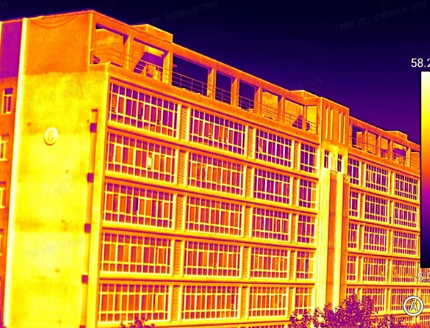Both infrared night vision devices and thermal imagers use infrared thermal imaging technology, which converts invisible infrared radiation emitted by objects into visible thermal images. Infrared thermal imaging is a passive, non-contact detection and identification technology. Its two primary functions are temperature measurement and night vision. Temperature measurement enables non-contact, long-range temperature measurement and fault detection, while night vision allows for easy detection and identification of targets in complete darkness.
Similarly, neither thermal imagers nor infrared night vision devices can see through walls. Walls are generally thick and insulated enough to block infrared radiation from the other side. If an infrared thermal imager is pointed at a wall, it will detect the heat from the wall, while heat from behind will be out of reach. However, if something inside the wall creates a sufficient temperature difference, the infrared thermal imager can also sense it on the wall's surface. For example, building maintenance professionals often use infrared thermal imagers to detect problems such as water leaks or missing insulation without having to remove the wall to assess the problem.
High-sensitivity military infrared and thermal imaging devices can theoretically see through walls, but this is difficult to achieve with excessively thick walls. Moreover, the so-called imaging is only a blurry image, different from what is seen with visible light.
Infrared night vision devices:
These are military night vision devices that utilize photoelectric conversion technology. They are divided into active and passive types. The former uses an infrared searchlight to illuminate the target and receives reflected infrared radiation to form an image; the latter does not emit infrared light, but relies on the target's own infrared radiation to form a "thermal image."
Infrared thermal imagers use an infrared detector and an optical imaging lens to receive the infrared radiation energy distribution pattern of the target being measured, which is reflected on the infrared detector's photosensitive element, thereby producing an infrared thermal image. This thermal image corresponds to the thermal distribution field on the object's surface. In layman's terms, an infrared thermal imager converts the invisible infrared energy emitted by an object into a visible thermal image. The different colors on the thermal image represent different temperatures of the object being measured.

It should be noted that:
1. Such equipment is difficult to purchase and expensive.
2. The concept of imaging is different from what is seen in movies and television.
3. So-called see-through—cotton clothing cannot be seen through.
4. Immoral use of infrared thermal imagers is illegal. Infrared thermal imaging cannot see through walls. In special effects movies, the ability of a thermal imager to see through walls is purely theatrical.
Infrared thermal imagers are thermal sensors based on infrared thermal imaging technology. In nature, any object with a temperature above absolute zero (-273.15°C) radiates infrared energy (heat) based on its temperature, but this energy is invisible to the human eye. Generally speaking, the higher the surface temperature of an object, the more infrared energy it emits.
An infrared thermal imager is essentially a heat sensor. It uses an optical lens to focus the infrared energy emitted by an object and transfers it to an infrared detector. Using technologies such as photoelectric conversion, electrical signal processing, and image intelligence algorithms, it converts the target's heat distribution into an infrared image that can be recognized by the human eye.
Because infrared thermal imagers sense heat rather than light, they offer many advantages over visible light. For example, they can see through harsh conditions like nighttime obscurations, rain, fog, glare, and haze, and operate in all weather conditions. They are a crucial extension of human vision and are so powerful that they are often misunderstood as capable of "seeing through things," but they are not truly capable of seeing through things.
However, thermal imaging cannot see through walls, as most reinforced concrete walls are very thick, blocking infrared radiation from the other side. Only objects within the wall that can cause a sufficient temperature difference, leading to heat conduction, can be detected by thermal imaging.


